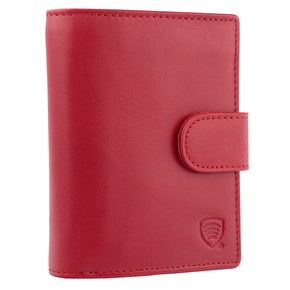RFID Protection - What Is It and How Does It Work? Everything You Should Know About the Security of Your Payment Cards

In the era of digitalization and the growing popularity of cashless payments, more and more people are using payment cards. Unfortunately, the increased use of this form of payment also carries the risk of data theft from the cards. In this article, you'll learn what RFID technology is, how it works, and how to ensure the security of your payment cards.
What is RFID technology? RFID (Radio Frequency Identification) is a radio identification technology that allows for the transmission and reading of data using radio waves. It is widely used in various industries such as commerce, logistics, transportation, and security. In the context of payment cards, RFID technology enables fast and convenient contactless payments.
How does RFID technology work? RFID technology operates based on communication between two devices: an RFID reader and an RFID tag (label) placed on the payment card. The reader sends a radio signal that stimulates the tag to transmit stored information back to the reader. This way, the reader can access the data on the payment card and complete the transaction.
Risks associated with RFID technology Despite its convenience, RFID technology also carries the risk of data theft. Thieves can use portable RFID reader devices to unauthorizedly read data from payment cards stored in wallets or bags. This practice, known as skimming, can lead to identity theft, unauthorized transactions, or fraud.
Ways to protect payment cards from skimming
To protect against data theft from payment cards, it's worth investing in appropriate security accessories. Here are some popular solutions:
a) RFID-protected wallets and cases
RFID-protected wallets and cases are equipped with special materials that block radio waves, creating a so-called Faraday cage. This way, cards stored in such a wallet are protected from unauthorized data reading. Various RFID-protected wallet and case models are available on the market, both for men and women, in different shapes, colors, and materials. By choosing an RFID-protected wallet, you can be confident that your cards are safe from skimming attacks.
b) RFID card sleeves
RFID card sleeves are another solution designed to protect your cards from unauthorized data reading. Simply insert your payment card into the sleeve, and the radio waves will be blocked. RFID card sleeves are usually thin and lightweight, making them easy to store in a wallet or purse.
c) Home security measures and regular monitoring
In addition to securing payment cards with specialized accessories, it's essential to remember basic security principles. Regularly check your transaction history to quickly detect any unauthorized operations. Additionally, do not share your card number, expiration date, or CVV code with anyone.
Other technologies related to payment card security
RFID protection is just one aspect of payment card security. It's also worth paying attention to other technologies aimed at increasing the level of payment security, such as tokenization or 3D Secure. Tokenization allows for the conversion of payment card information into a unique string of characters, used only during a single transaction. 3D Secure, on the other hand, is an additional step in payment verification, confirming the user's identity through a password or SMS code.
Conclusion RFID technology, though convenient, carries some risks associated with data theft from payment cards. To ensure your safety, invest in appropriate protective accessories, such as RFID-protected wallets or cases. Remember to also follow basic security principles, such as regularly checking transaction history or not sharing payment card information. This way, we can enjoy the convenience of contactless payments without worrying about the theft of our data and financial resources.




